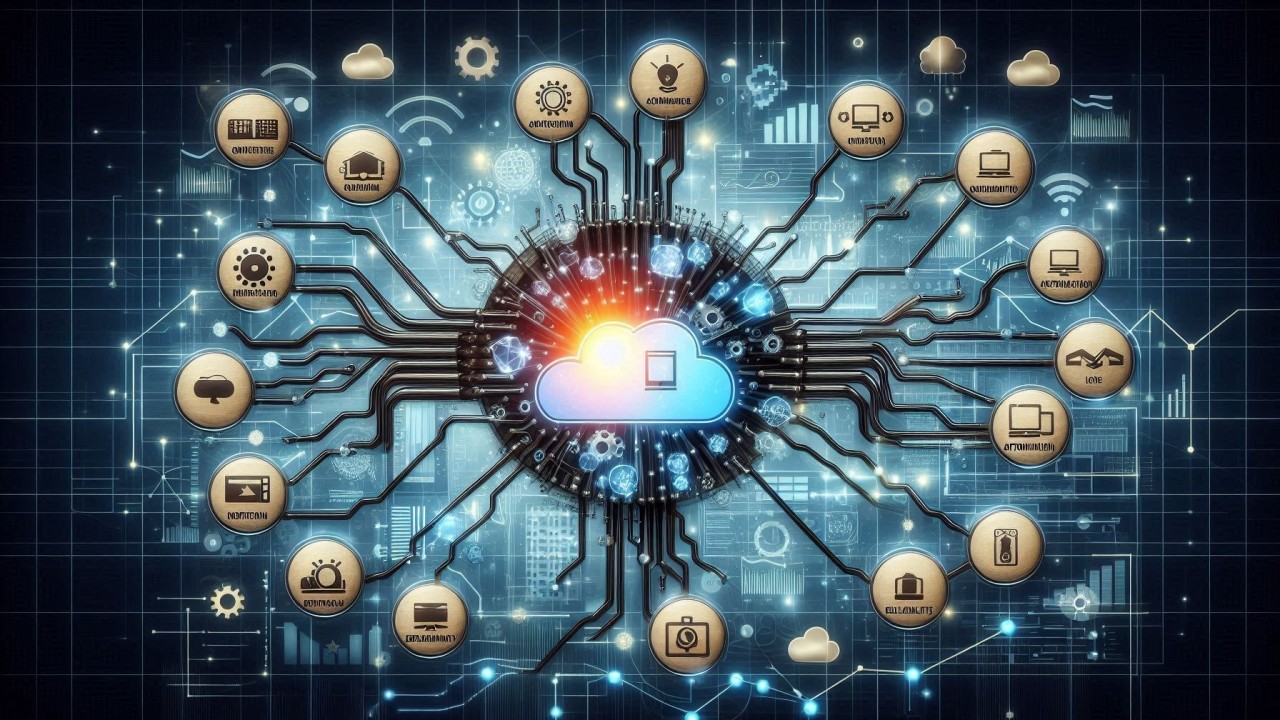As enterprises embrace digital transformation, IT operations have become more complex, demanding intelligent solutions for monitoring, automation, and troubleshooting. AIOps (Artificial Intelligence for IT Operations) is revolutionizing the IT landscape by leveraging AI and machine learning to automate operations, enhance performance, and predict failures before they occur.
In 2025, AIOps platform development is expected to evolve further, integrating cutting-edge technologies and methodologies to optimize IT infrastructure. IT leaders must stay ahead of these trends to ensure resilient, efficient, and scalable IT operations. This blog explores the latest trends in AIOps platform development and what IT leaders need to focus on.
1. Hyperautomation in IT Operations
Trend Overview
Hyperautomation is a key driver in AIOps platform development. It extends beyond traditional automation by integrating AI, machine learning (ML), and robotic process automation (RPA) to automate end-to-end IT workflows.
Why It Matters for IT Leaders
- Reduces manual interventions and enhances efficiency
- Automates incident detection, root cause analysis, and resolution
- Speeds up IT service management (ITSM) and DevOps workflows
Key Developments
- AI-driven auto-remediation of IT incidents
- Self-healing IT systems that proactively detect and fix issues
- Integration of RPA with AIOps for automated incident response
2. Predictive and Prescriptive Analytics for IT Resilience
Trend Overview
AIOps is moving beyond reactive problem-solving to predictive and prescriptive analytics, anticipating IT issues before they escalate and recommending the best course of action.
Why It Matters for IT Leaders
- Helps prevent system failures and downtime
- Reduces mean time to resolution (MTTR)
- Enhances IT performance monitoring and decision-making
Key Developments
- Use of deep learning models to analyze historical IT data and predict failures
- AI-powered risk scoring and impact analysis
- Automated incident resolution recommendations
3. Cloud-Native and Hybrid AIOps Platforms
Trend Overview
As enterprises adopt multi-cloud and hybrid environments, AIOps solutions must be cloud-native, scalable, and capable of integrating across diverse infrastructures.
Why It Matters for IT Leaders
- Ensures seamless IT operations across on-prem, cloud, and hybrid ecosystems
- Reduces cloud complexity and cost optimization
- Supports cross-platform observability
Key Developments
- AI-driven Kubernetes management for containerized applications
- Multi-cloud workload optimization using AIOps analytics
- Serverless AIOps for real-time IT insights
4. Advanced Anomaly Detection with Explainable AI (XAI)
Trend Overview
One of the biggest challenges in AIOps is AI explainability. IT leaders need AI models that can justify their decisions, making it easier to understand and trust their outputs.
Why It Matters for IT Leaders
- Enhances AI transparency and trustworthiness
- Reduces false positives and alert fatigue
- Improves decision-making in IT operations
Key Developments
- Adoption of explainable AI (XAI) to make AIOps models more interpretable
- Context-aware anomaly detection to reduce false alerts
- AI models capable of learning IT operational baselines dynamically
5. AI-Augmented IT Teams and No-Code/Low-Code AIOps
Trend Overview
AIOps is evolving to augment IT teams rather than replace them. With no-code and low-code platforms, IT teams can configure AI workflows without deep coding knowledge.
Why It Matters for IT Leaders
- Democratizes AIOps adoption across IT teams
- Reduces reliance on AI/ML specialists for operations management
- Increases agility in IT incident handling
Key Developments
- No-code/low-code AIOps platforms for easy implementation
- AI-powered chatbots for IT helpdesk automation
- Virtual AI assistants for real-time IT operations support
6. Observability-Driven AIOps for Unified IT Insights
Trend Overview
AIOps is shifting from traditional monitoring to full-stack observability, providing unified visibility into infrastructure, applications, and network performance.
Why It Matters for IT Leaders
- Helps break down IT silos for holistic monitoring
- Improves troubleshooting efficiency
- Enhances real-time visibility into complex IT environments
Key Developments
- AI-powered log and event correlation for proactive insights
- End-to-end observability platforms with AI-driven root cause analysis
- Integration with security operations (SecOps) for unified threat detection
7. AI-Powered IT Security and Threat Detection
Trend Overview
With increasing cyber threats, AIOps is being integrated with cybersecurity solutions to detect and respond to security anomalies in real-time.
Why It Matters for IT Leaders
- Enhances IT security posture with proactive anomaly detection
- Automates incident response to cyber threats
- Reduces mean time to detect (MTTD) and respond (MTTR) to attacks
Key Developments
- AI-driven threat intelligence and attack pattern detection
- Behavioral analytics for insider threat detection
- Integration of AIOps with Security Information and Event Management (SIEM)
8. Edge AI for AIOps and Decentralized IT Operations
Trend Overview
With the rise of IoT and edge computing, AIOps is extending beyond centralized data centers to handle IT operations at the edge.
Why It Matters for IT Leaders
- Improves real-time IT insights at distributed locations
- Reduces latency in incident detection and response
- Enhances performance monitoring in edge environments
Key Developments
- AI-powered edge observability for IoT and distributed IT assets
- Federated learning in AIOps to process decentralized IT data
- Real-time incident prediction at the edge
Conclusion
The AIOps platform development landscape in 2025 is rapidly evolving with advancements in hyperautomation, predictive analytics, observability, cybersecurity, and edge AI. IT leaders must adopt these innovations to enhance operational efficiency, security, and scalability.
By embracing these trends in AIOps platform development, IT teams can build resilient, intelligent, and future-ready IT infrastructures.







